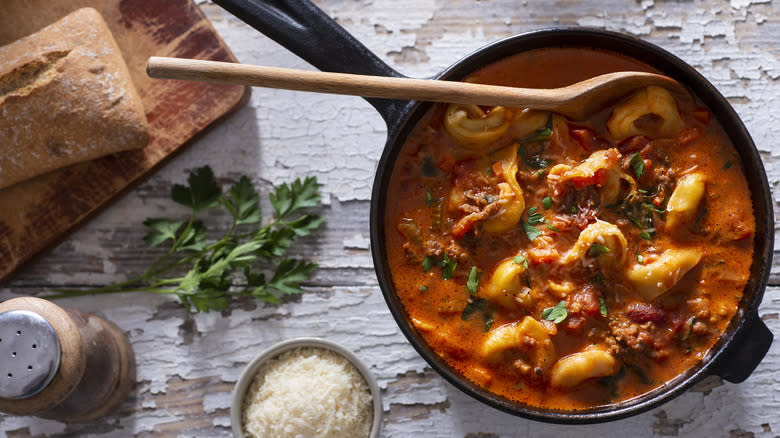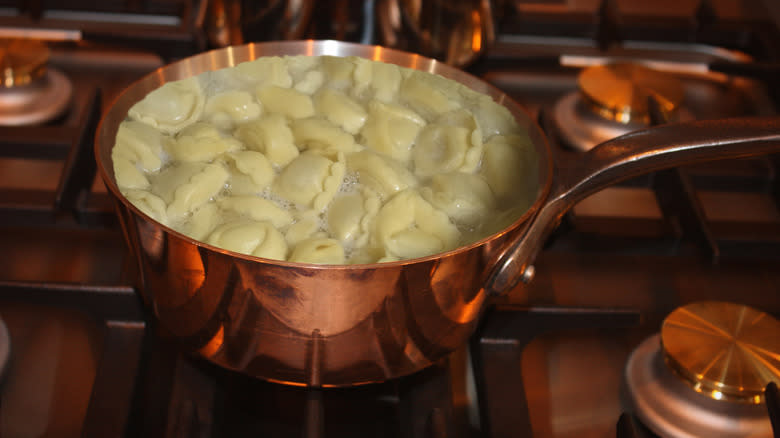The Tortellini Tip That Ensures A Better Textured Pasta

Traditionally stuffed with ricotta, pork, or veal, tortellini are the perfect parcels of pasta for those who crave noodles with extra textural bite. Much like ravioli, these delicious morsels are the ideal vehicle for virtually any ground meat, veggie, or cheese — everything is wrapped up neatly in a cute ring-shaped dumpling that can be enjoyed in a simple chicken broth or tossed through an aromatic sauce. However, overcook these bite-sized beauties and you'll end up with mushy, unappetizing pasta with a rubbery filling. The trick to ensuring your little bundles have the best texture? Partially cook them in boiling water before finishing them off in your sauce.
Unless you've been living under a rock, you'll likely have heard the term "al dente" around any mention of pasta, which roughly translates to "to the tooth" in Italian. Boiling your pasta until al dente means cooking it so it's slightly underdone and has a little texture and resistance. The same rule goes for cooking tortellini (in fact, it may even be better to drain it a few moments before it's reached the al dente stage).
While it can be tempting to boil your stuffed pasta for longer to account for the filling, it isn't necessary. This is because the small amount of stuffing in tortellini — usually a teaspoon or less, which is already precooked if it's a meat-based filling— is designed to warm through at the same rate as the pasta.
Read more: 44 Types Of Pasta And When You Should Be Using Them
Part Cook Pasta So It Can Soak Up The Sauce

There are two benefits to undercooking your tortellini before adding it to your bubbling sauce. Firstly, it eliminates the risk of your pasta getting soggy once added to your hot pan because it still has some bandwidth left for carryover cooking. Secondly, it allows your tortellini to soak up some of the fragrant flavors in the pasta sauce, whether it be a herby marinara, truffle cream, rich alfredo, or a simple aglio e olio. Reserving some of the starchy water your tortellini was cooked in and adding a splash to your sauce will lend your finished dish a thicker, satisfying viscosity. Moreover, it will coat your stuffed pasta with an appetizingly glossy sheen.
If you're unsure how long to cook your tortellini, a good rule of thumb is to knock a couple of minutes off the time mentioned in the cooking instructions on the packet. Set a timer and when it goes off, taste your pasta to check if it has reached the perfect toothsome texture. If it needs a little longer, simply allow it to bubble away for another minute or so before draining the water (making sure to retain a cup of that starchy liquid to add to your sauce if desired).
Read the original article on Tasting Table

